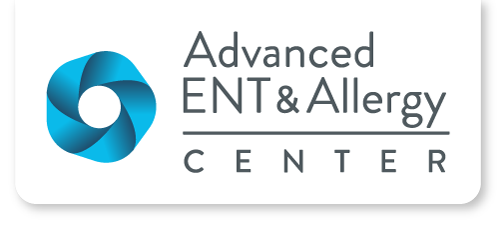Turbinate Reduction Surgery in Denver, CO
Nasal turbinates are long, narrow structures in your nose that humidify, clean, and warm the air you breathe before it reaches your lungs. When your turbinates become swollen — a condition known as turbinate hypertrophy — you might experience congestion, headaches, trouble sleeping, and other frustrating symptoms.
Thankfully, our team at Advanced ENT specializes in turbinate reduction surgery, a minimally invasive procedure that’s designed to give you long-term relief.
What Is Turbinate Reduction & Why Is It Done?
During turbinate reduction surgery, a specialist will remove tissue from your nasal turbinates, then reposition them for better airflow. Simply put, this procedure reduces swelling and allows you to breathe easier.
What Are Turbinates?
On each side of your nose, there are three small, bony structures called turbinates: the superior turbinate, the middle turbinate, and the inferior turbinate. These structures facilitate airflow, filtering and regulating the air that you inhale.
The turbinates work together to promote a healthy breathing cycle — so, if any of your turbinates swell up, it could give rise to a handful of irritating symptoms.
Enlarged Turbinates (Turbinate Hypertrophy)
When one of your turbinates (usually the inferior turbinate) becomes inflamed, the newfound nasal obstruction will likely cause some of these symptoms:
- Congestion
- Difficulty breathing
- Headaches
- Nosebleeds
- Sleep apnea
- Snoring
What Causes Enlarged Turbinates?
If you’re suffering from enlarged turbinates and considering treatment options, you aren’t alone! Turbinate hypertrophy can arise from many causes, including:
- Allergies
- Environmental irritants
- Sinus infections
- Medication side effects
- Changes in temperature
- Hormonal changes
- Infections
- Tumors
Enlarged Turbinates Treatment Options
 Treatments for enlarged turbinates fall into three main categories: at-home treatments, medications, and surgical procedures.
Treatments for enlarged turbinates fall into three main categories: at-home treatments, medications, and surgical procedures.
At-home treatments are the first line of defense against turbinate hypertrophy. Your doctor might recommend that you drink plenty of water, add a humidifier to your bedroom, and use saline nasal washes to rinse out your sinuses.
A second, stronger line of defense against enlarged turbinates involves medication, which is frequently used in combination with at-home remedies. Typical medications include nasal corticosteroids or antihistamine sprays.
If your turbinate hypertrophy doesn’t respond to medications or non-invasive treatments, it’s time for the final line of defense: surgery. Our specialists recommend turbinate reduction surgery because it improves breathing and resolves related issues like post-nasal drip — in many cases, permanently!
How Common Is Turbinate Reduction Surgery?
Turbinate reduction surgery is very common. Though it’s often performed alone, this procedure is sometimes paired with another corrective surgery like septoplasty or rhinoplasty.
Whether your enlarged turbinates come from allergies, hormonal changes, or a pesky sinus infection, our team will uncover and treat the root cause.
How Successful Is Turbinate Reduction?
In the hands of a skilled professional, turbinate surgery is highly effective. Most patients experience immediate relief after the surgery, as well as a significant increase in quality of life.
After your surgery, you can expect long-term resolution of your symptoms. Though the tissue around your turbinates can regrow, it normally takes many years. For some patients, it never returns at all!
Turbinoplasty Procedure
Though it might sound complicated, a turbinate reduction procedure is actually fairly straightforward.
We won’t cover every nuance of the surgery, but these are the main steps:
- We administer general anesthesia or local anesthesia, depending on the case.
- We make a small incision in the mucosa that lines the enlarged turbinate.
- We reduce the tissue inside of the turbinate, using one of several techniques:
- Radiofrequency turbinate reduction
- Cauterization
- Coblation
- And more
- We reposition the turbinate to allow for better airflow between the nasal septum and the turbinate.
Because we use specialized tools and advanced surgical techniques, we can perform the entire procedure through the nostrils, leaving no incisions on your skin and minimizing recovery time.
How Do I Know if I Need Turbinate Reduction Surgery?
If your symptoms impair your quality of life (for example, if you’re sleeping poorly, having difficulty working out, or experiencing frequent headaches), you should see an ENT doctor.
To reach a diagnosis, your provider will likely perform a procedure called a nasal endoscopy to examine your nasal cavity. This procedure is quick and effective; it involves inserting a thin, flexible tube with a tiny camera into your nose, then illuminating your nasal passages to see if your turbinates are swollen.
Usually, your doctor will start you out with a blend of medication and at-home remedies. If those treatments prove unsuccessful, it’s time to consider turbinate reduction surgery.
How Painful Is Turbinate Reduction?
Though turbinate reduction surgery is minimally invasive, many patients experience minor discomfort during the following days. To reduce the pain after your operation, be sure to follow your doctor’s instructions carefully and take all medicines as prescribed.
Meeting with a well-trained specialist is key. They’ll perform your surgery as efficiently as possible, minimizing damage to your tissues and smoothing out your recovery process as much as possible.
Is Turbinate Reduction Surgery Safe?
Generally, turbinate surgery is very safe, with a satisfaction rate that falls between 82% and 96%. In rare cases, a surgeon might remove too much turbinate tissue, which will dry out your nasal airway and make it harder to breathe.
Our team at Advanced ENT has been doing turbinate reduction surgeries successfully for years. Get in touch with us today, and we’ll get you started on the road to easy, pain-free breathing.
What Are the Pros and Cons of Turbinate Reduction Surgery?
As with every surgical procedure, turbinate reduction surgery carries a handful of noteworthy benefits and a few minor risks. Let’s take a look at both.
-
Pros:
- Outpatient procedure with a rapid recovery time
- Facilitates airflow and improves nasal breathing
- Reduces snoring and apnea, resulting in better sleep
- Helps to treat allergies
- Increases overall quality of life
-
Cons:
- Congestion and swelling for several days after the procedure
- A chance of chronic nasal dryness
- Increased likelihood of nosebleeds
- Minor risk of scar tissue
The bottom line: Though turbinate reduction surgery isn’t foolproof, it’s well worth it to improve your nasal health in the long run. An ENT doctor will help you decide if it’s the right path for you.
How Long Does It Take To Recover From Turbinate Reduction?
Thankfully, all patients are released to return home once their anesthesia wears off — but total recovery time varies on a case-by-case basis.
Some patients can return to their daily routines the day after their procedure. For others, two weeks will pass before they can jump back into work, school, or exercise. Most commonly, though, it takes between three days and a week to recover and get back to a normal lifestyle.
To expedite your recovery, remember to take your prescribed medications, avoid strenuous activities, refrain from blowing your nose, and elevate your head to relieve pressure. You should feel a noticeable improvement in your breathing on the first day after your surgery!When to Call the Doctor
If your symptoms are hindering your ability to live comfortably, it’s a good idea to go see your healthcare provider. They’ll recommend the best course of treatment for you.
If you’ve recently had a turbinate reduction surgery, be sure to reach out to your doctor if you’ve had any complications, including symptoms like:
- Fever
- Bleeding
- Severe pain
- Difficulty breathing
No matter what, you should seek immediate medical care if you’re finding it extremely hard to breathe or experiencing a sudden worsening of symptoms.
Get Relief From Your Symptoms
Breathing shouldn’t be a chore. At Advanced ENT, we have years of experience successfully treating swollen turbinates, and we’re ready to help you overcome your symptoms. That way, you can wake up feeling refreshed — and finally enjoy the beautiful Colorado air.
Let’s get started on a custom treatment plan. Just call us at (303) 792-3242, or book an online or in-person appointment today.
Frequently Asked Enlarged Turbinate Questions
We typically suggest waiting at least a week before blowing your nose after turbinate reduction surgery to help prevent bleeding and expedite healing.
Insurance providers typically cover enlarged turbinates surgery. Feel free to contact your insurance provider to determine what they will cover. We’ll discuss all costs with you at your consultation.
Usually, we use local anesthesia during turbinate reduction surgery to allow faster recovery, without the risks of general anesthesia. However, general anesthesia is an option, if necessary.
Insurance typically covers enlarged turbinates surgery. Cost will depend on your insurance provider. We will discuss all expenses with you prior to your surgery.
If you think you may be suffering from enlarged turbinates, schedule a consultation, either via telehealth or in-person, today. Our team at Advanced ENT and Allergy has decades of experience performing nasal turbinate surgery and helping patients experience long-term relief from congestion and trouble breathing.
Turbinate reduction surgery usually takes 15-20 minutes, but can vary based on the patient. If another procedure is added (sinus surgery, septoplasty, etc.) at the same time, it will take longer.
No, turbinate reduction surgery will not alter your appearance.
Yes — if there are other factors causing nasal congestion (like a deviated septum, polyps, enlarged adenoids, etc.), we can address these issues at the same time as your turbinate reduction surgery. We’ll discuss all of your treatment options during your consultation.
